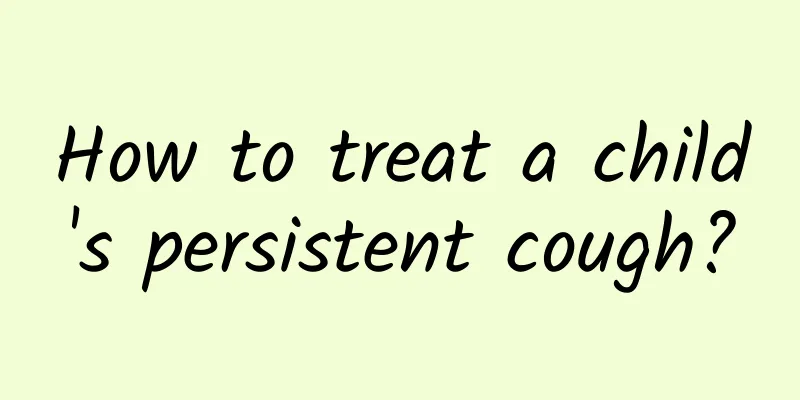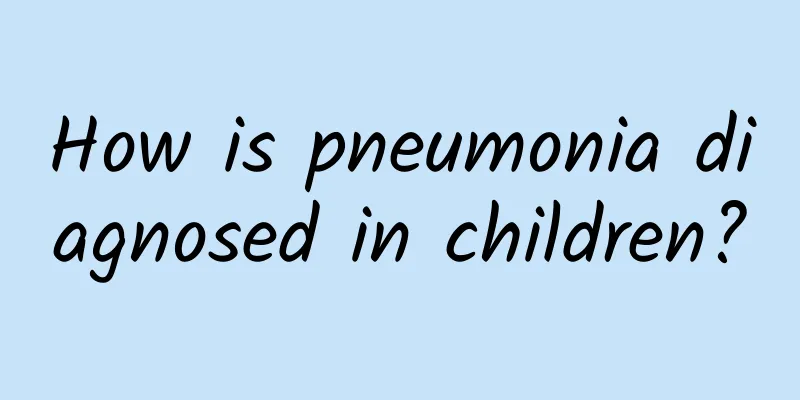What are the nursing measures for Kawasaki disease?

|
In daily life, we should learn more about some common knowledge about diseases so that we can deal with them well and reduce a lot of unnecessary troubles. Take Kawasaki disease as an example. Failure to treat it in time will cause the disease to become more serious. The following introduction is about the care measures for Kawasaki disease. I hope it can help everyone. 1. Fever care Physical cooling is the main method for high fever. After admission, physical cooling is combined with routine aspirin treatment. Children in the acute stage should absolutely stay in bed to reduce metabolism and energy consumption. Warm water baths are often used, and ice pillows or ice patches are placed on the head. The parts where large blood vessels run can also be rubbed gently and repeatedly to increase the cooling effect. The body temperature should be checked again 1-2 hours after cooling treatment. When the fever subsides, there is a lot of sweating and a large amount of water loss. Feed more or intravenous fluids, change sweaty clothes and sheets in time, and keep the skin clean and dry. 2. Diet care Because children have fever and oral mucosal ulcers that affect their appetite, older children should be encouraged to eat and given high-calorie, high-vitamin, nutritious and easily digestible liquid or semi-liquid diets. Children are encouraged to drink plenty of water and avoid eating overheated, salty, hard or spicy foods to reduce irritation to the oral mucosa. 3. Cardiovascular care Kawasaki disease mainly affects the cardiovascular system. The child's complexion and mental state should be closely observed, heart rate should be measured and heart sounds should be listened to regularly, and electrocardiogram, cardiac B-ultrasound, echocardiogram and blood myocardial enzyme tests should be performed regularly. When the myocardium is damaged, the child should be advised to stay in bed and rest. The infusion rate should be strictly controlled, and an infusion pump should be used when necessary. 4. Skin and mucous membrane care The child develops a rash 1-3 days after fever, which manifests as scarlet fever-like rash, maculopapular rash or erythema multiforme-like rash, which is more common on the trunk. Pay attention to the disappearance and progression of the rash, keep the skin clean, wash the buttocks with warm water every day, and apply tannic acid ointment. Cut nails frequently to prevent scratches. When desquamation occurs, warn parents not to tear it artificially to damage the integrity of the skin. The skin should be allowed to fall off on its own. Wear cotton underwear, keep the bed clean, dry, flat, and free of debris. Apply disinfectant paraffin oil to chapped lips. For older children, give 1% to 2% sodium bicarbonate solution or saline to rinse the mouth, and give oral care to those who cannot cooperate. |
<<: How to prevent recurrence of Kawasaki disease
>>: What are the nursing methods for Kawasaki disease?
Recommend
What are the examination items for mumps
Many people have had similar experiences, that is...
Briefly describe the causes of diarrhea in children
The causes of pediatric diarrhea mainly include i...
What to do if your three-month-old baby coughs and has phlegm
Three-month-old babies have a relatively weak con...
Is pneumonia in children the same as pneumonia in adults? Is it contagious?
Pneumonia in children and pneumonia in adults are...
What foods should polio patients eat?
Diseases in life can be adjusted through diet. A ...
Why does my baby have a dry cough at night? Is my baby's dry cough at night caused by rhinitis?
It is a common condition for children to have dry...
How to diagnose acute laryngitis in children best
What is the best way to diagnose acute laryngitis...
What are the methods for treating allergic cough in children? How to use medicine to treat allergic cough in children
Allergic cough in children is mainly caused by al...
What should not be eaten if you have hand, foot and mouth disease
During the period of hand, foot and mouth disease...
Can babies take azithromycin? What diseases can azithromycin treat?
Azithromycin is mainly used to treat coughs and d...
How many days does a child with pneumonia need intravenous drip?
Children with pneumonia generally require intrave...
What should I do if my newborn baby has a cough?
If a newborn has a cough, you should pay attentio...
Obstructive jaundice is not harmful
There are many diseases that can happen to the hu...
What to do if your child has a stuffy nose due to a cold? Keep your head elevated when sleeping
As the weather gets colder, if parents don't ...
What to do if your baby has an upper respiratory tract infection and coughs
The baby's upper respiratory tract infection ...









